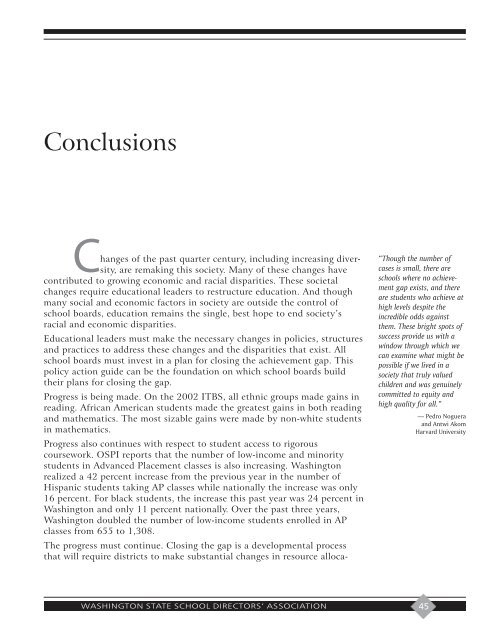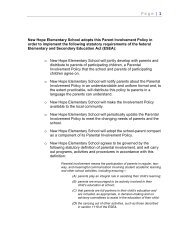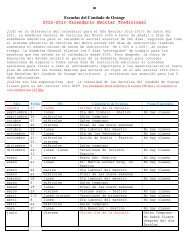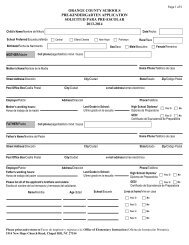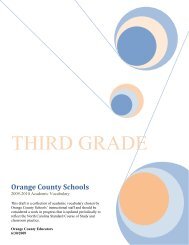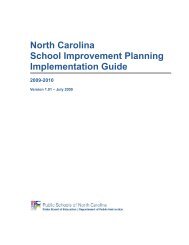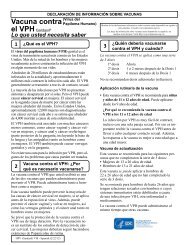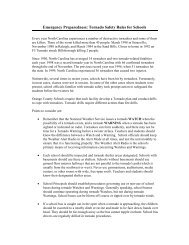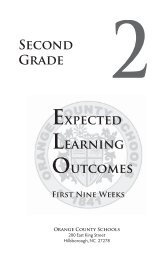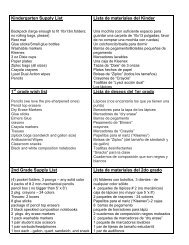Closing the Achievement Gap - Washington State School Directors ...
Closing the Achievement Gap - Washington State School Directors ...
Closing the Achievement Gap - Washington State School Directors ...
You also want an ePaper? Increase the reach of your titles
YUMPU automatically turns print PDFs into web optimized ePapers that Google loves.
ConclusionsChanges of <strong>the</strong> past quarter century, including increasing diversity,are remaking this society. Many of <strong>the</strong>se changes havecontributed to growing economic and racial disparities. These societalchanges require educational leaders to restructure education. And thoughmany social and economic factors in society are outside <strong>the</strong> control ofschool boards, education remains <strong>the</strong> single, best hope to end society’sracial and economic disparities.Educational leaders must make <strong>the</strong> necessary changes in policies, structuresand practices to address <strong>the</strong>se changes and <strong>the</strong> disparities that exist. Allschool boards must invest in a plan for closing <strong>the</strong> achievement gap. Thispolicy action guide can be <strong>the</strong> foundation on which school boards build<strong>the</strong>ir plans for closing <strong>the</strong> gap.Progress is being made. On <strong>the</strong> 2002 ITBS, all ethnic groups made gains inreading. African American students made <strong>the</strong> greatest gains in both readingand ma<strong>the</strong>matics. The most sizable gains were made by non-white studentsin ma<strong>the</strong>matics.Progress also continues with respect to student access to rigorouscoursework. OSPI reports that <strong>the</strong> number of low-income and minoritystudents in Advanced Placement classes is also increasing. <strong>Washington</strong>realized a 42 percent increase from <strong>the</strong> previous year in <strong>the</strong> number ofHispanic students taking AP classes while nationally <strong>the</strong> increase was only16 percent. For black students, <strong>the</strong> increase this past year was 24 percent in<strong>Washington</strong> and only 11 percent nationally. Over <strong>the</strong> past three years,<strong>Washington</strong> doubled <strong>the</strong> number of low-income students enrolled in APclasses from 655 to 1,308.The progress must continue. <strong>Closing</strong> <strong>the</strong> gap is a developmental processthat will require districts to make substantial changes in resource alloca-“Though <strong>the</strong> number ofcases is small, <strong>the</strong>re areschools where no achievementgap exists, and <strong>the</strong>reare students who achieve athigh levels despite <strong>the</strong>incredible odds against<strong>the</strong>m. These bright spots ofsuccess provide us with awindow through which wecan examine what might bepossible if we lived in asociety that truly valuedchildren and was genuinelycommitted to equity andhigh quality for all.”— Pedro Nogueraand Antwi AkomHarvard UniversityWASHINGTON STATE SCHOOL DIRECTORS’ ASSOCIATION45


